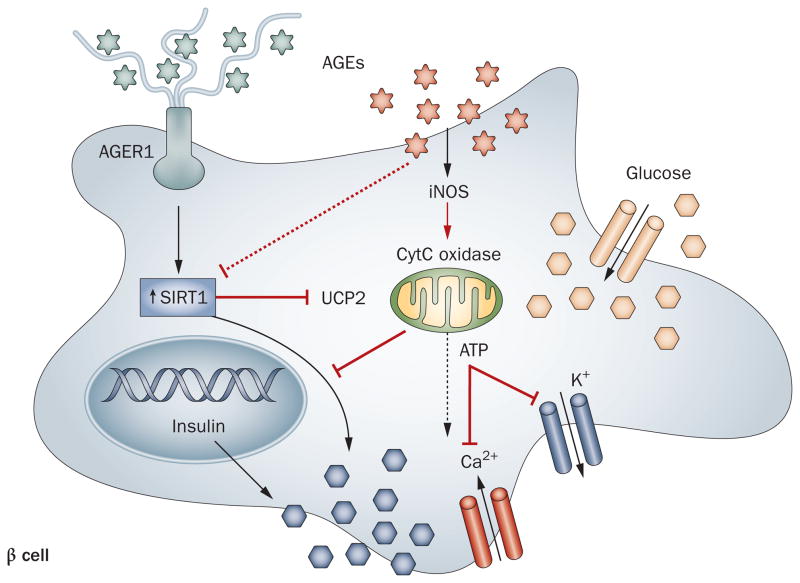Figure 4.
AGEs impair insulin secretion in pancreatic islet β cells. This process can occur via several pathways: by iNOS induction, and through the generation of mitochondrial ROS, AGEs suppress cytochrome C oxidase levels and ATP generation, reducing membrane depolarization and insulin release; by suppressing insulin gene promoter activity; by suppressing SIRT1, which regulates UCP2, impairing β-cell depolarization and secretory function; by promoting immune cell (T cell, macrophage) recruitment, activation and β-cell cytotoxicity, apoptosis or cell death. AGER1 normally suppresses the effects of AGEs and ROS and may enhance SIRT1 expression and function in β cells, positively regulating insulin secretion. Under chronic high-level AGE conditions, AGER1 is downregulated, which may contribute to β-cell dysfunction or destruction. Abbreviations: AGE, advanced glycation endproduct; AGER1, AGE receptor 1; CytC, cytochrome c; iNOS, inducible nitric oxide synthase; SIRT1, NAD-dependent deacetylase sirtuin-1; UCP2, mitochondrial uncoupling protein 2.

